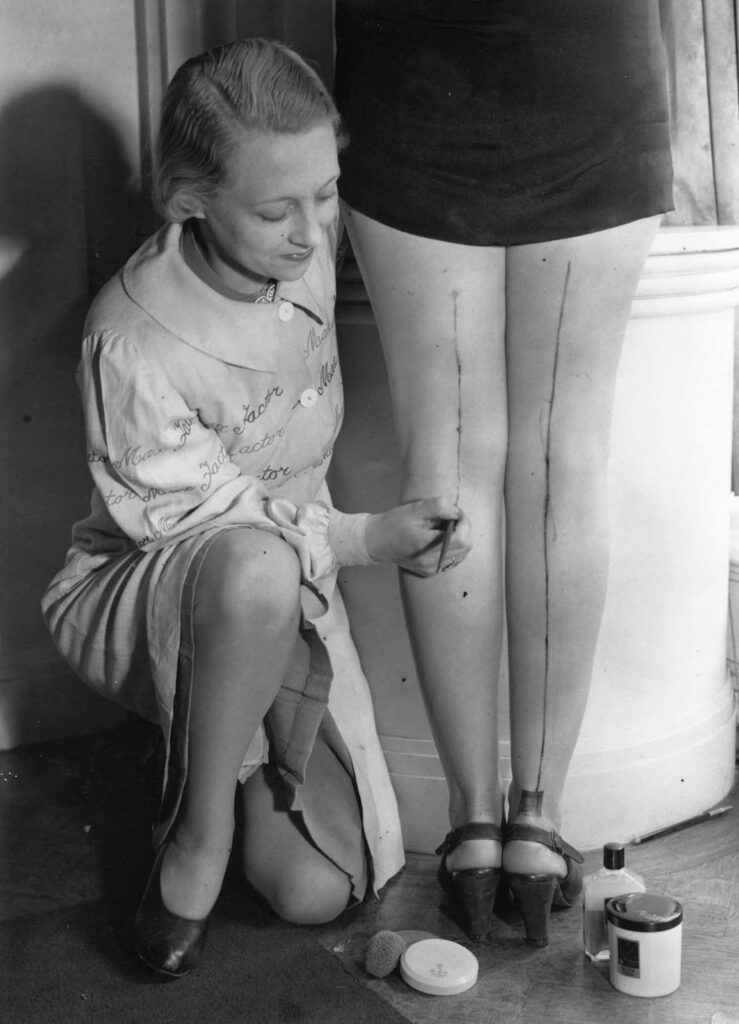
The finest women’s stockings were fashioned of silk until the end of the 1930s. This changed in the US when DuPont started nylon production in 1939. October of that year saw restricted sale of nylon stockings, then a countrywide introduction at a few chosen locations in 1940.
Though they cost the same as silk, eager American consumers bought the new nylons.
When the United States entered the war, DuPont battled to meet demand and American women were still complaining about shortages in 1942. Until after 1945, commercial quantities of nylon stockings would not reach anywhere else in the world.
Though most nylon was used to make stockings, some were purchased by the American military to substitute silk in the production of parachutes.
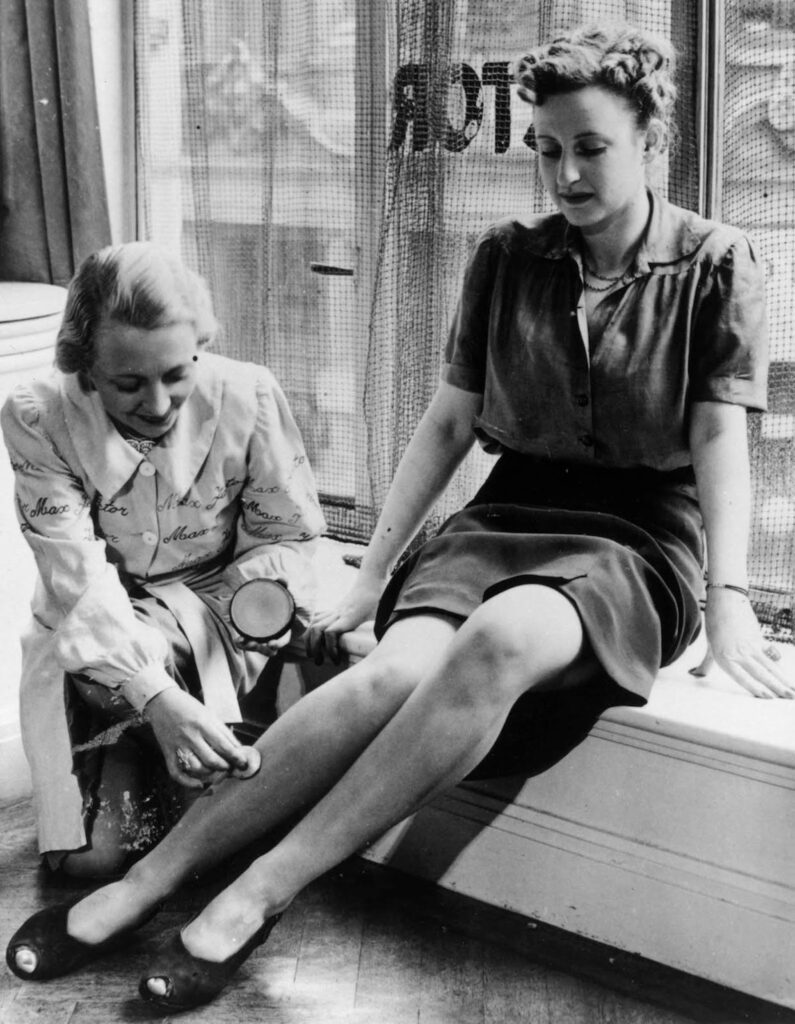
DuPont moved nylon manufacture to a war footing when the United States entered the war, channeling supplies of nylon for stockings dry-up into national defense uses such parachutes and bomber tires.
The nylon ration spawned a new fashion. Liquid stockings, we referred to them. For the impression of a hose, your legs’ foundation is meticulously and equally applied.
Advanced users drew the “seam” with black eyeliner pencils, which gave them a more realistic look. Drawing in the seam-line on “Makeup” stockings with an eyebrow pencil, bicycle leg clip, and screwdriver handle tool.

Some businesses held specials where you could get your legs painted to see the impact or had dedicated leg make–up bars where you could buy the cosmetics and get advice on how to apply them for optimum effect in an effort to generate sales. Early American proponent of the leg bar Helena Rubinstein
She first opened a Bare-Leg Bar in her 5th Avenue salon in 1942. The bar included foot talcs, a cooling masque for legs and feet, special lotions, creams and cosmetics for the legs, and pedicure preparations.
Different forms of cosmetic stockings were shown on opening day: sprayed on the legs, stick form, out of a bottle.
As the war came to an end, substitutes fell off and nylon stockings returned to the stores. Less than two weeks after the Japanese handed over, DuPont started manufacturing nylon for stockings.

As ladies rushed to purchase nylons, their resuming limited sales in the United States resulted in what reporters of the time termed the nylon riots of 1945 and 1946.
Cosmetic stockings persisted longer and were still being sold in the 1950s, far after the war was done, in those economically deprived areas where clothing remained to be rationed.
Although others still wore cosmetic stockings to tan their legs, their ultimate absence marked not the end of leg make-up.
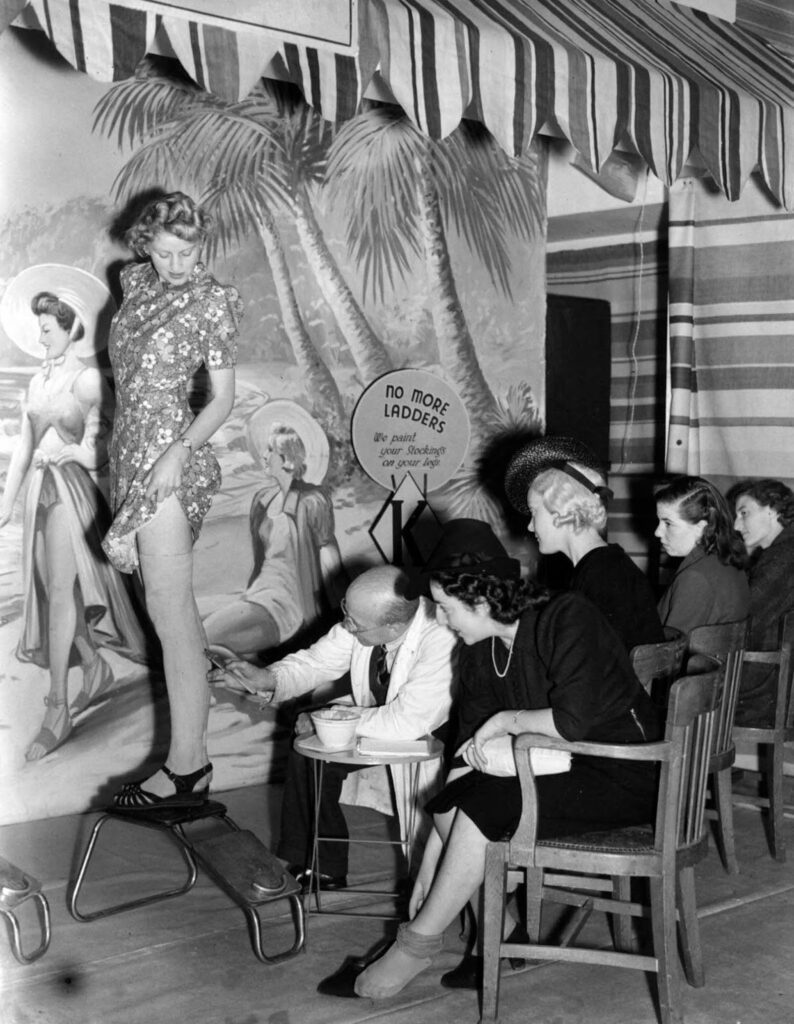
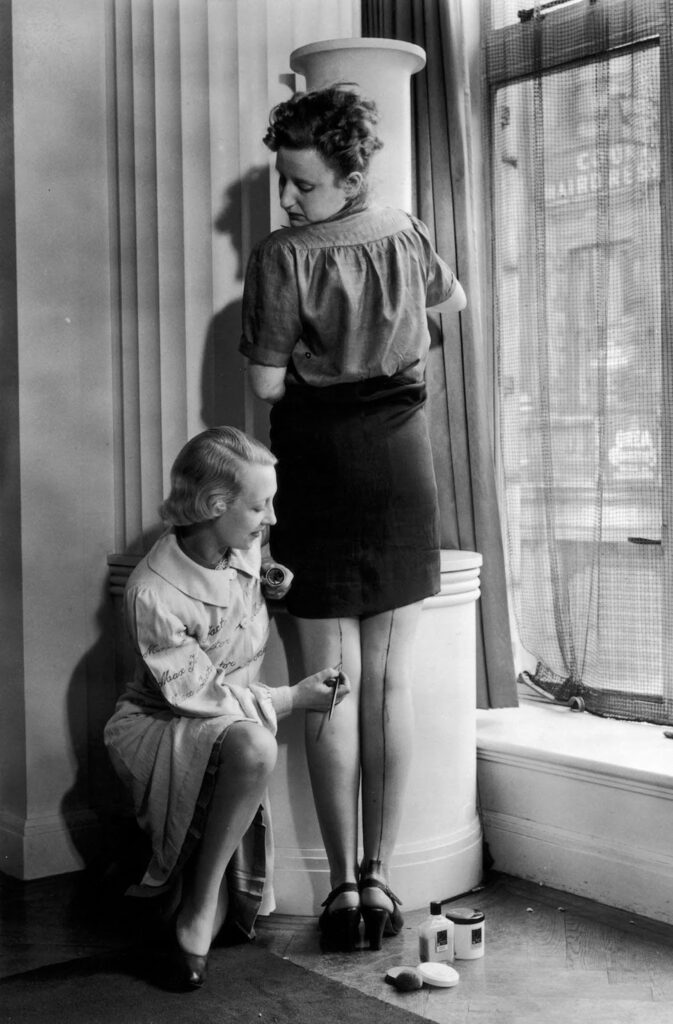
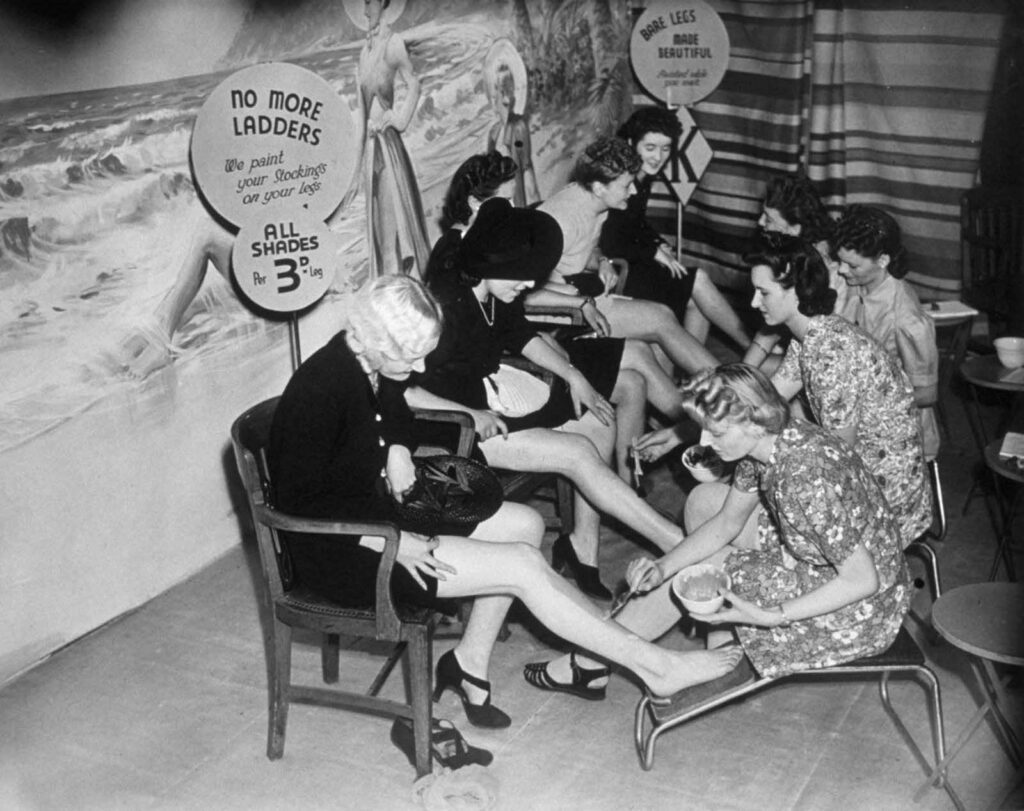


(Photo credit: Library of Congress / Pinterest).


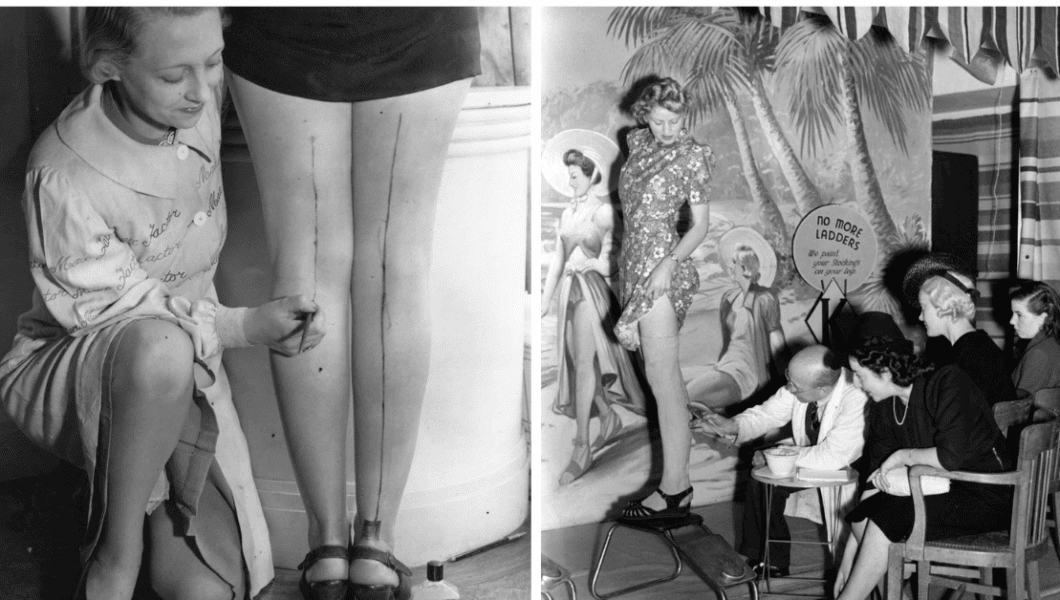





No Comments